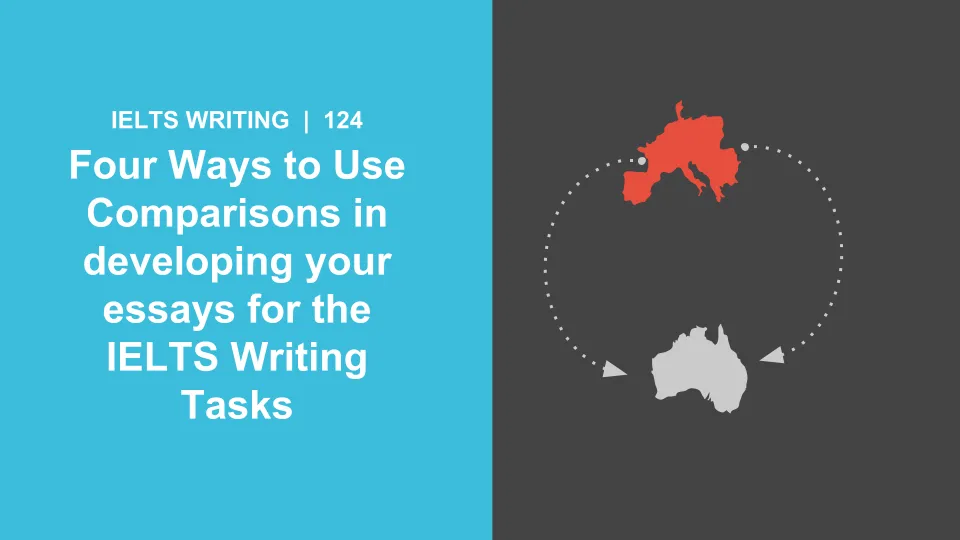
Using comparisons to develop your essays
Home » IELTS academic task 2 » Using comparisons to develop your essays
There are usually only two main ways to compare items.
The first one is to point out their similarities and the second is to point out their differences.
Let’s go a little deeper into the discussion of how each one can be used.
I. Comparing similar items
Pointing out the similarities between two or more items can be done in two ways.
A. Expressing similarities but with different degrees or levels
- This means that the items compared share the same characteristics and qualities but one’s intensity is less or greater than the other.
- Here the words more, less, better, worse and words added with the suffix “er” are used.
Examples:
1. Discrimination against women in economic, social and political aspects of society, appears to be more severe in developing countries than it is in wealthier ones.
2. The integration of technology into our everyday lives has been beneficial to many but its accessibility is less apparent in the members of the lower class than in those who are members of the high and middle class societies.
3. The development of chemical weapons in some countries are among the growing concerns in the world but the intensifying effects of global warming is a more pressing issue that the world needs to address urgently.
B. Expressing similarities in a different way with two sentences
- Here the words/phrases similarly, in like manner, in a similar pattern, in a similar way, etc. are used.
Examples:
1. Books are a wealth of knowledge. Similarly, the internet is a learner’s paradise, it just needs to be used purposefully and moderately.
2. Men are said to be the strength and protector of mankind. In much the same way, women are deemed as the heart and soul of humanity.
3. In the very early stages of our lives, as infants, we are very dependent on others for our every need. In a similar way, when we reach the latter years of adulthood we lose or weaken our faculties and resume dependency on others.
II. Comparing different or contrasting items
Pointing out the differences between two or among three or more items can be expressed in two ways.
A. Contrasting with one sentence
- This means pointing out the difference/s in items with the use of just one (1) sentence.
- Here you make use of the words/phrases like while, whereas, however, but, in contrast to, compared with, and more.
Examples:
1. Adults deem play only as a fun leisurely activity, whereas, children deem it as a serious business.
2. Compared with cameras in Android phones and iPhones which are lighter and produce relatively good images, SLR/DSLR are heavier and more complex to use but they are still more preferred by professional photographers.
3. In contrast to the methods used by conventional doctors, non-conventional doctors promote the use of healthy diet and lifestyle and other less painful and less costly ways to fight cancer.
III. Contrasting with two sentences
- This means pointing out the difference/s in items with the use of two (2) sentences.
- Here you still make use of similar phrases like in contrast to, compared with, on the contrary, opposite that, from a different perspective, from a different viewpoint, on the other hand, and more.
Examples:
1. (On the one hand) Financial advisors recommend investments in bonds, mutual funds and FX swaps. On the other hand, businessmen believe that the best investment would often be in private companies.
2. Dehydration can cause blurred vision, brain fog and even high blood pressure. In contrast, being over hydrated causes an imbalance in one’s electrolyte levels.
3. Some analysts believe that formal qualifications prepare workers better. On the contrary, others believe that there is no substitute for real world experience.
*On the contrary is usually used for giving opinions.
Final Thoughts
A great way to develop your essay is through the use of comparisons and there are four different ways described here which you can choose from.
All you need to do now is to practice using each one as many times as possible and find out later which one will best fit the answers you come up with during your IELTS test.
For more help with your IELTS exam, take a look at some more IELTS Writing task 2 questions.
